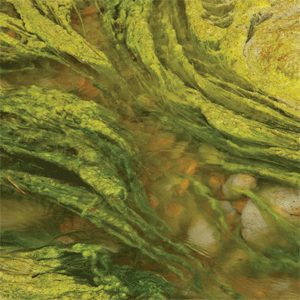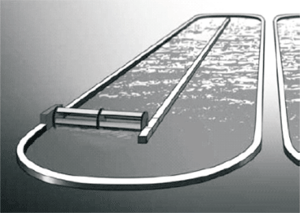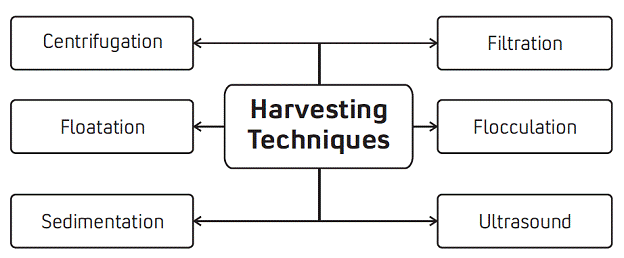


 Gaurav Nainani (BE Chemical Engg. Student) |
 Vishal Gurnani (BE Chemical Engg. Student) |
 Vinay Khilwani (BE Chemical Engg. Student) |
 Prof. Purohit S. J. |
ABSTRACT
Energy and energy services are the backbone for the growth and development of any country and is totally dependent on the use of fossil fuels that lead to greenhouse gas emissions. Biodiesel from algae are being evolved as carbon free alternative fuel. Biodiesel is produced by transesterification process of algal oil content extracted. Algae are photosynthetic microorganisms that convert sunlight, water and CO2 with other required nutrients. Various sugars and lipid and show promise as an alternative, renewable and green fuel source for the increasing fuel requirements. Compared to other oilseed crops algae have potentially higher oil yield and can be grown in any place not suited for agriculture as well as by using photobioreactors designed for algae cultivation.
KEYWORDS
Fossil fuels, Biodiesel, Microorganisms, Transesterification, Photobioreactors.
INTRODUCTION
The depletion of fossils fuel supplies and the contribution of these to the accumulation of CO2 in the atmosphere make it a priority to find renewable, carbon neutral, transport fuels for environmental and economic sustainability. Biodiesel is considered as a possible substitute or extender of conventional diesel fuel, it is quite similar and compatible with conventional diesel fuel in its main characteristics. Biodiesel derived from oil crops is a potential renewable and carbon neutral alternative to petroleum fuels. Unfortunately, biodiesel from oil crops, waste cooking oil and animal fat cannot realistically satisfy even a small fraction of the existing demand for transport fuels. Algae have recently received a lot of attention as a new biomass source for the production of renewable energy. Some of the main characteristics which set algae apart from other biomass sources are that algae (can) have a high biomass yield per unit of light and area, can have a high oil or starch content, do not require agricultural land, fresh water is not essential and nutrients can be supplied by wastewater and CO2 by combustion gas.
LITERATURE REVIEW
WHAT IS BIODIESEL?
Biodiesel refers to a vegetable oil- or animal fat-based diesel fuel consisting of long-chain alkyl esters. Biodiesel is typically made by chemically reacting lipids with an alcohol producing fatty acid esters.
FEEDSTOCK FOR BIODIESEL PRODUCTION
VEGETABLE OIL
These are the pure oils from various crops and plants such as soybean, rapeseed, corn, cottonseed, flax, sunflower, peanut, and palm. These are the most widely used feedstock by commercial biodiesel producers. The oil composition from vegetable crops is pure; this cuts down on preprocessing steps and makes for a more consistent quality of biodiesel product. However, the oil content is low as compared to other feedstock and also it competes with other agricultural products for land availability thus indirectly increasing the costs of other useful agricultural products.

ANIMAL FATS
The second group of feedstock for biodiesel production is fats and tallow derived from animals. Animal fat, however, has its own disadvantage when used for producing biodiesel, because it contains high amounts of saturated fat, biodiesel made from it on burning gives a gummy residue which clogs the engine or generator used.

ALGAE AS A FEEDSTOCK
Algae range from small, single-celled organisms to multi-cellular organisms, some with fairly complex and differentiated form. Algae are usually found in damp places or bodies of water and thus are common in terrestrial as well as aquatic environments. Like plants, algae require primarily three components to grow: sunlight, carbon-dioxide and water. Photosynthesis is an important bio-chemical process in which plants, algae, and some bacteria convert the energy of sunlight to chemical energy. The first distinction that needs to be made is between macroalgae (seaweed) versus microalgae.
WHAT ARE MICROALGAE?
Microalgae are unicellular microscopic photosynthetic microorganisms. Microalgae are generally more efficient than land based plants in utilizing sun light, CO2, water and other nutrients. They have minimal nutrient requirements and are being used as source materials for a variety of products such as protein rich nutritional supplements, pharmaceutical chemicals and pigments (used in food and cosmetics). They also grow extremely fast, in comparison to plants and many microalgae strains are exceedingly rich in oil which makes them great candidates for the production of biodiesel.
BENEFITS OF MICROALGAE
Microalgae are receiving increased global attention and rapid market growth. They offer important benefits such as:
- Use of sunlight as main energy source to convert the greenhouse gas CO2 into biomass.
- High concentrations of valuable contents such as proteins, lipids, pigments or acids.
- Potential use of salt or fresh water, which can even be replaced by waste water.
- Algae cultivation is ascribed to the third generation of biomass production i.e.
- No agricultural land uptake
- No competition with agricultural crops
- Independent of raw material imports.
EXISTING MECHANISMS FOR LARGE SCALE ALGAE GROWTH
Common photosynthetic algae cultivation systems are open ponds and closed photo bioreactors.
OPEN PONDS

Open ponds are typically built in circular or raceway configurations. The water is kept in motion with the help of paddle wheels. Open ponds are seemingly inexpensive and easy to build. However, poor light utilization, danger of contamination and high water evaporation are main challenges, which lead to low biomass output per area and large water uptake. Some difficulties can be overcome by rooftops, however, increasing costs.
CLOSED PHOTOBIOREACTORS

Closed systems are dominated by tubular and flat plate reactors. Other options are bags, coils or domes. Flat plate systems have received a lot of attention due to their large illuminated surface area, but the technology suffers from heating problems and a strong tendency to build up bio film formations on the inner walls.

HARVESTING AND CONVERSION TECHNIQUES OF BIOMASS
The existing mechanisms for harvesting of microalgae from the culture mediaare as follows:
Microalgal cells are harvested using either centrifugation or filtration with the aid of flocculants. The harvested biomass is either extracted to obtain its oil or converted into biodiesel through biochemical conversion.The harvested biomass is processed to release the products such as triacylglycerol.
The conversion of the extracted TAG into biodiesel uses three methods i.e
- Base catalyzed transesterification with alcohol.
- Acid catalyzed esterification with methanol.
- Convert the oil to fatty acids. Then acid catalyze to alkyl esters.
The process of Base catalyzed by alcohol is the most common and economical process as it uses low pressures and temperatures giving high conversion rates with no intermediate steps.
FUTURE OF ALGAL BIODIESEL
Biodiesel from algae is an ideal fuel canditate which can replace the fuels derived from fossils. The reason being advantages like high oil content,high production with less land requirement and ecofriendly fuel. Currently,the conversion process of algae to biodiesel is a costly affair and hence not commercialized. The process can be made cost effective by using genetically engineered algae species rich in oil content and also by using algae for producing other value added products besides biodiesel. Algae contain large quantities of proteins,carbohydrates and other nutrients which makes the residue after oil extraction attractive for use as an animal feed and in other industries like food,pharmaceuticals,etc for making other value-added products.
R&D NEEDS
The research and development efforts can be categorized into several areas:
- Increasing oil content of existing strains or selecting new strains with high oil content;
- Increasing the growth rate of algae;
- Developing robust algal-growing systems in either open-air or enclosed environments;
- Developing co-products other than oil;
- Using algae in bioremediation; and
- Developing an efficient oil-extraction method
Ways of achieving the above aims are by either genetically modifying the algae for higher lipid output or by improving the existng mechanisms i.e developing photobioreactor configurations for better results.
REFRENCES
- González-Fernández, C., B. Sialve, N. Bernet and J.-. Steyer, "Impact of microalgae characteristics on their conversion to biofuel. Part I: Focus on cultivation and biofuel production,"Biofuels, Bioproducts and Biorefining. 6, 105-113 (2012).
- Gouveia, L. and SpringerLink, "Microalgae as a Feedstock for Biofuels," (2011).
- Wang, B., C.Q. Lan and M. Horsman, "Closed photo-bioreactors for production of microalgal biomasses" Biotechnol.Adv. 30, 904-912 (2012).10.
- Amini Khoeyi, Z., J. Seyfabadi and Z. Ramezanpour, "Effect of light intensity and photoperiod on biomass and fatty acid composition of the microalgae.
- Andersen, R.A., "Algal culturing techniques," Elsevier/Academic Press, Burlington,Mass. (2005), pp. 578.
AUTHORS:
GAURAV NAINANI
VISHAL GURNANI
VINAY KHILWANI
(BE Chemical Engg. Students) &
PROF. PUROHIT S. J.
Thadomal Shahani Engg. College, Bandra, Mumbai- 400050
Email: purohitin@yahoo.com

